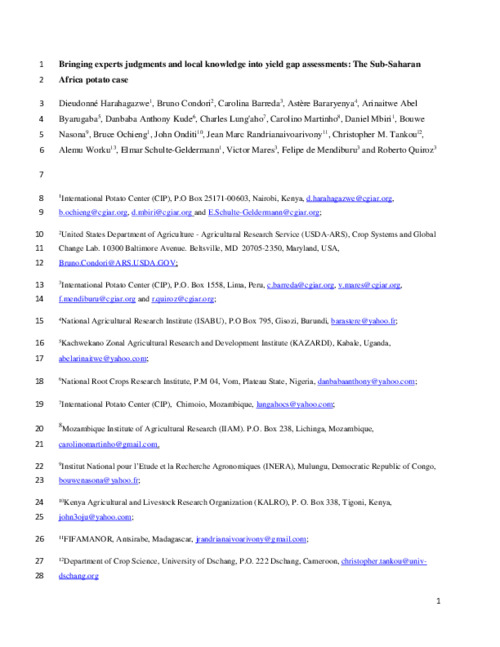Bringing experts judgments and local knowledge into yield gap assessments: The Sub-Saharan Africa potato case
Abstract
Potato farmers across Sub-Saharan Africa (SSA) produce on average 12 % of the potential yield and 24 Mg ha-1 less than yields obtained in experimental stations as evidenced by this study, that implemented an innovative consultation for assessing potato yield gaps (Yg), based on modeling and the use of non- published experimental and farm data provided by experts organized in a community of practice (CoP). It also tested a participatory elicitation and analysis of yield gap drivers, conducted through an online survey involving experts in potato research and development in SSA. This describes a unique methodology tested most likely for the first time on potato, that combined modeling and a comprehensive online survey through a community of practice. This initiative intended to overcome the paucity of experimental information required for crop modeling in developing countries. Over twenty-five researchers from ten countries, who provided the data and contributed to the estimation of the crop parameters for modeling, participated in the Yg analysis conducted. Knowledge and data contributed by the experts were systematized through a novel algorithm duly validated against experimental data by the CoP. Data from ten SSA countries were included in the analysis. The model, developed by CIP, simulates tuber dry mass assimilation and partitioning, based on the light interception and utilization framework. Yield gap drivers were assessed through a 6-month survey co-designed through the CoP and administered through a paid Web-based platform SurveyMonkey which submitted 15 closed-ended questions pertaining to the three major SSA potato agro-ecologies. Further analysis proved that SSA countries (excluding South Africa) could easily increase by 140% the current annual production of 10.8 million metric tons if high quality seed of CIP-derived varieties along with improved management practices were deployed to fill the yield gap

